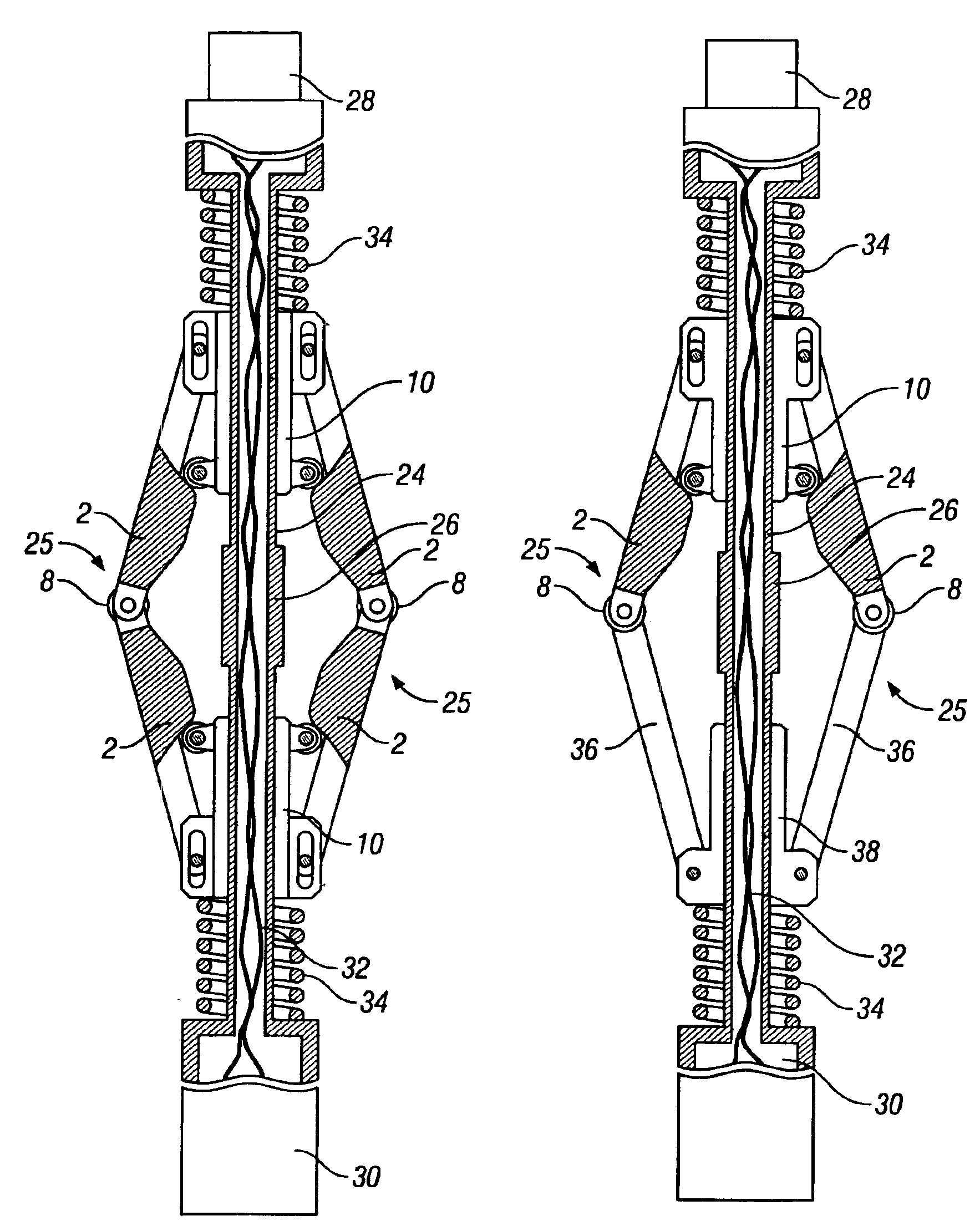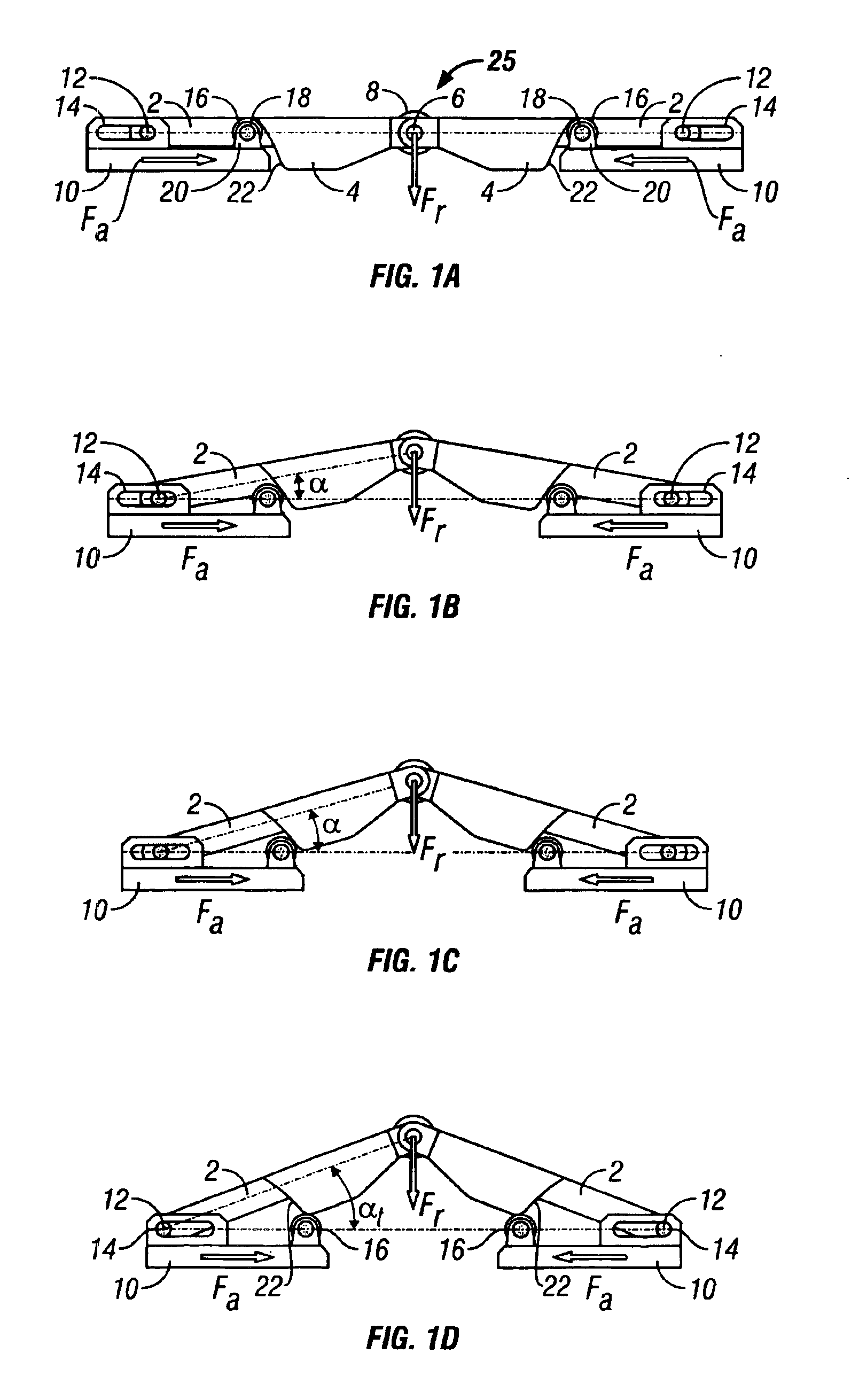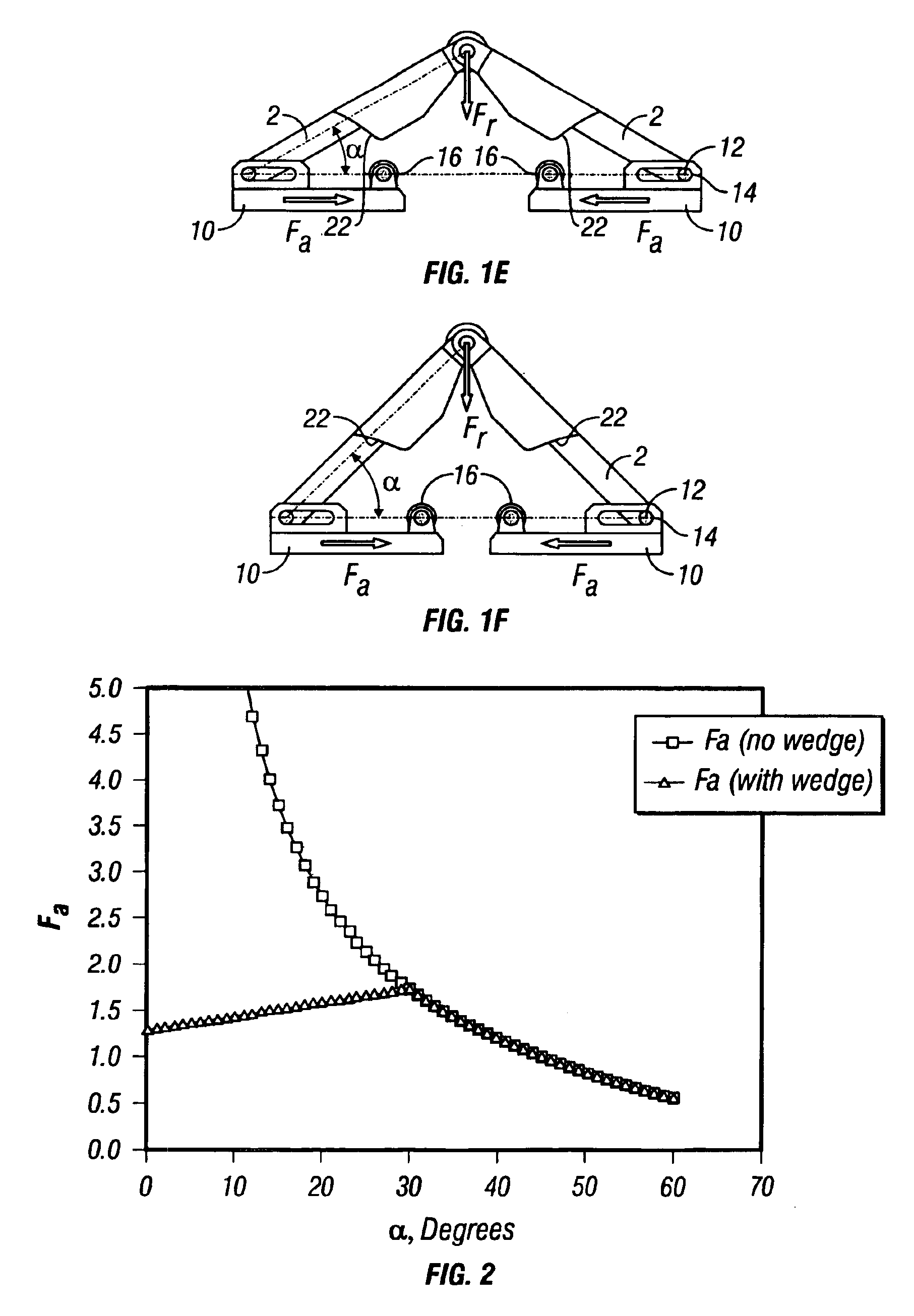Constant force actuator
a constant force actuator and actuator technology, applied in the direction of surveying, drilling pipes, borehole/well accessories, etc., can solve the problems of affecting the motion of tools along the well, and affecting the accuracy of the tool. achieve the effect of constant input axial for
- Summary
- Abstract
- Description
- Claims
- Application Information
AI Technical Summary
Benefits of technology
Problems solved by technology
Method used
Image
Examples
Embodiment Construction
[0039]Illustrative embodiments of the invention are described below. It will be appreciated that in the development of any such actual embodiment, numerous implementation-specific decisions must be made to achieve the developer's specific goals, such as compliance with system-related and business-related constraints, which will vary from one implementation to another. Moreover, it will be appreciated that such a development effort might be complex and time consuming but would nevertheless be a routine undertaking for those of ordinary skill in the art having the benefit of this disclosure.
[0040]Referring now to FIGS. 1A-1F, the basic principles of the present invention are shown by way of operational illustrations, with the substantially constant force linkage of the apparatus being shown in its closed or fully retracted condition in FIG. 1A and at various stages of movement to a fully open or fully extended condition shown in FIG. 1F. The major elements and the principle of operati...
PUM
 Login to View More
Login to View More Abstract
Description
Claims
Application Information
 Login to View More
Login to View More - R&D
- Intellectual Property
- Life Sciences
- Materials
- Tech Scout
- Unparalleled Data Quality
- Higher Quality Content
- 60% Fewer Hallucinations
Browse by: Latest US Patents, China's latest patents, Technical Efficacy Thesaurus, Application Domain, Technology Topic, Popular Technical Reports.
© 2025 PatSnap. All rights reserved.Legal|Privacy policy|Modern Slavery Act Transparency Statement|Sitemap|About US| Contact US: help@patsnap.com



